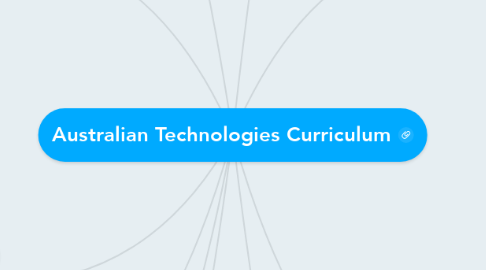
1. Aims/Objectives
1.1. Students are creative, innovative and enterprising when using both traditional and emerging technologies
1.2. Select and manipulate appropriate technologies for specific tasks
1.3. Critique and evaluate technologies - provide solutions to problems faced.
1.4. Make informed, ethical and sustainable decisions in regards to making decisions about technologies for the future.
2. Strands/Subjects
2.1. teachers will select technologies specific content from the Knowledge and understanding strand and ask students to apply the skills in the Processes and production skills strand to that content.
2.2. Digital Technologies
2.2.1. Knowledge and Understanding
2.2.2. Processes and Production Skills
2.3. Design and Technologies
2.3.1. Knowledge and Understanding
2.3.2. Processes and Production Skills
3. Key Concepts
3.1. Abstraction
3.2. Data Collection, Data Representation and Data Interpretation
3.3. Specification, Algorithms and Implementation
3.4. Digital Systems
3.5. Interactions and Impact
4. Key Ideas
4.1. Systems thinking and the overarching idea: Creating preferred Futures
4.1.1. Holistic Approach - Parts of a system analysed to see bigger picture
4.1.2. Ethically, socially responsible and sustainable patterns of living
4.1.3. Predict outcomes and impacts of technological desicions
4.2. Project Managment
4.2.1. Planning and Evaluating Processes, decision-making strategies; quality control; developing resource, finance, work and time plans
4.2.2. Ethical, health and safety considerations.
4.2.3. Assessing and managing risk
4.2.4. Colloborating and communicating with others
5. General Capabilities
5.1. Literacy
5.1.1. Use of correct technologies terminology and subject specific vocab
5.2. Numeracy
5.2.1. calculate, measure and estimate; interpret and draw conclusions from statistics
5.2.2. Measure and record throughout the process of generating ideas
5.2.3. develop, refine and test concepts;and cost and sequence when making products and managing projects.
5.2.4. Create technical drawings, using measurement, angles, 3D models etc.
5.3. Information and Communication Technology Capability
5.3.1. Create solutions considering social and environmental impact
5.3.2. formulate problems, logically organise and analyse data and represent it in abstract forms
5.3.3. learn how to operate specific software tools and digital hardware to assist them to realise their design ideas.
5.4. Critical and Creative Thinking
5.4.1. take into account sustainability and changing economic, environmental and social needs and concerns. How can they be adapted?
5.5. Ethical Understanding
5.5.1. rights and responsibilities as civillians
5.5.2. consider sustainable choices in regards to technologies
5.6. Intercultural Understanding
5.6.1. Understand how technologies are used in other cultures
5.7. Personal and Social Capability
5.7.1. Self manage and direct own learning
5.7.2. work collaboratively with peers
6. Student Diversity
6.1. Varying levels of learning and abilities
6.2. English as a second language or dialect
7. Cross-Curriculum Priorities
7.1. Aboriginal and Torres Straight Islander History and Cultures
7.1.1. identify, explore, understand and analyse the interconnectedness between technologies and Identity, People, Culture and Country/Place
7.2. Asia and Australia's Engagement with Asia
7.2.1. students to explore traditional, contemporary and emerging technological achievements in the countries of the Asia region
7.3. Sustainability
7.3.1. Evaluate the extent to which the process and designed solutions embrace sustainability
8. Content Elaboration
8.1. support material to illustrate and exemplify what is to be taught and to assist teachers in developing a shared understanding of the content descriptions
8.2. not intended to be comprehensive content points that all students need to be taught nor do they encompass every aspect of a content description.
9. Band Levels
9.1. Foundation - Year 2
9.2. Year 3 -4
9.3. Year 5-6
9.4. Year 7-8
9.5. Year 9-10
9.6. Year 11-12
10. Achievement Standards
10.1. Quality of learning students should be demonstrating at a particular point in their schooling
10.2. Technology Achievement Standards
10.2.1. Foundation to Year 2
10.2.1.1. Develop attitudes of care in relation to resources and places used
10.2.1.2. Recognise relationships between real world and imagined/virtual world
10.2.1.3. Communicate Ideas through drawing and modelling
10.2.1.4. Recognise importance of precise instructions
10.2.1.5. Solve problems using digital systems
10.2.1.6. Create Ideas and information and share them online
10.2.2. Year 3 to Year 6
10.2.2.1. Develop a sense of social, ethical and environmental responsibility
10.2.2.2. give reasons for actions and explain thought process/sequence of ideas
10.2.2.3. recognise and value the way others think
10.2.2.4. Communicate and record ideas in diagrams and drawings
10.2.2.5. examine thinking, process and production of technologies.
